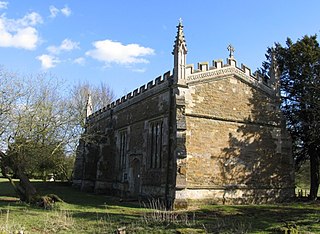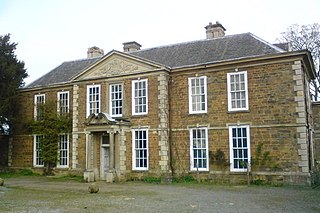
George Boleyn, Viscount Rochford was an English courtier and nobleman who played a prominent role in the politics of the early 1530s as the brother of Anne Boleyn, second wife of King Henry VIII. George was the maternal uncle of Queen Elizabeth I, although he died long before his niece ascended the throne. Following his father's promotion in the peerage in 1529 to Earl of Wiltshire and Earl of Ormond, he adopted his father's junior title Viscount Rochford as a courtesy title. He was accused of incest with his sister Anne during the period of her trial for high treason, as a result of which both were executed.

Sir Philip Hoby PC was a 16th-century English Ambassador to the Holy Roman Empire and Flanders.

Sir Ralph Sadler or Sadleir PC, Knight banneret was an English statesman, who served Henry VIII as Privy Councillor, Secretary of State and ambassador to Scotland. Sadler went on to serve Edward VI. Having signed the device settling the crown on Jane Grey in 1553, he was obliged to retire to his estates during the reign of Mary I. Sadler was restored to royal favour during the reign of Elizabeth I, serving as a Privy Councillor and once again participating in Anglo-Scottish diplomacy. He was appointed Chancellor of the Duchy of Lancaster in May 1568.
Gentleman Usher and Lady Usher are titles for some officers of the Royal Household of the United Kingdom. For a list of office-holders from the Restoration of the monarchy in 1660 up to the present day see List of Lady and Gentleman Ushers.

Gregory Cromwell, 1st Baron Cromwell, KB was an English nobleman. He was the only son of the Tudor statesman Thomas Cromwell, 1st Earl of Essex and Elizabeth Wyckes.
The Cave, later Cave-Browne, later Cave-Browne-Cave Baronetcy, of Stanford in the County of Northampton, is a title in the Baronetage of England.
Sir John Norreys was a high ranking Lancastrian, and the head of the branch of the Norreys family who became prominent under the reign of the House of Tudor. He served as Keeper of the Wardrobe for King Henry VI of England.

Sauvey Castle is a medieval castle, near Withcote, Leicestershire, England. It was probably built by King John in 1211 as a secluded hunting lodge in Leighfield Forest. It comprised a ringwork or shell keep, with an adjacent bailey; earthwork dams were constructed to flood the area around the castle, creating a large, shallow moat. The castle was occupied by the Count of Aumale in the early reign of Henry III, but it then remained in the control of the Crown and was used by royal foresters until it fell into disuse in the 14th century. By the end of the 17th century, its walls and buildings had been dismantled or destroyed, leaving only the earthworks, which remain in a good condition in the 21st century.
Sir William Compton was a soldier and one of the most prominent courtiers during the reign of Henry VIII of England.

Sir Richard Herbert of Ewyas, Herefordshire, was a Welsh knight, gentleman, landowner, and courtier. He was an illegitimate son of William Herbert, 1st Earl of Pembroke (1423–1469), and Maud ap Howell Graunt, a daughter of Adam ap Howell Graunt (Gwynn). Richard had a full brother named George.

Withcote is a small parish currently comprising a number of scattered dwellings in Harborough, a local government district of Leicestershire. The population is included in the civil parish of Braunston-in-Rutland.
Elizabeth Chamber, better known as Elizabeth Stonor, was an English courtier. She is remembered as the wife of Sir Walter Stonor, and was one of the women chosen to serve Anne Boleyn, the king's second wife, during her imprisonment in 1536.

Sir William Coffin was a courtier at the court of King Henry VIII of England. He was a Gentleman of the Privy Chamber to King Henry VIII and Master of the Horse to Queen Jane Seymour. He was elected MP for Derbyshire in 1529.
Sir Ambrose Cave was an English politician and Chancellor of the Duchy of Lancaster.

Withcote Chapel is a redundant Anglican church in the parish of Withcote, Leicestershire, England. It is recorded in the National Heritage List for England as a designated Grade I listed building, and is under the care of the Churches Conservation Trust. Alec Clifton-Taylor includes the church in his list of 'best' English parish churches.

Henry Poole was an English politician.
Dorothy Erskine, Countess of Kellie was a public figure. While married to John Pakington, a favourite of Queen Elizabeth I, she was involved in a matrimonial dispute that was heard in front of the Attorney General, Francis Bacon who was also her son-in-law.
Sir Arthur Hopton of Cockfield Hall in Yoxford, Suffolk was an English knight, landowner, magistrate, and Member of Parliament.

Galyon Hone was a glazier from Bruges who worked for Henry VIII of England at Hampton Court and in other houses making stained glass windows. His work involved replacing the heraldry and ciphers of Henry VIII's wives in windows when the king remarried.

Ambrose Smith or Smythe was a London mercer in Cheapside and silkman who supplied Elizabeth I











